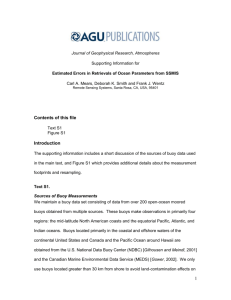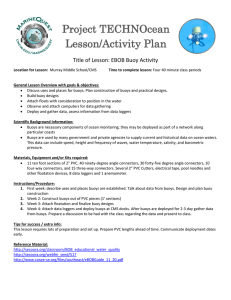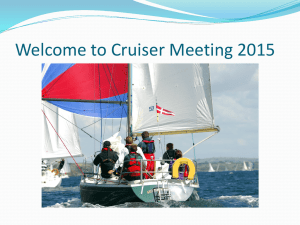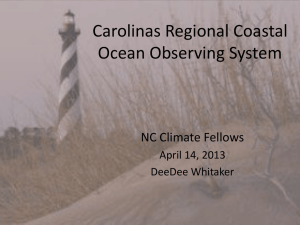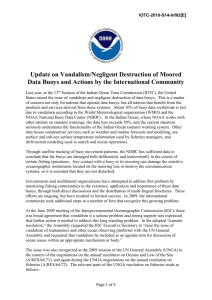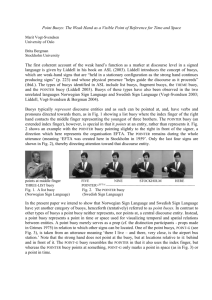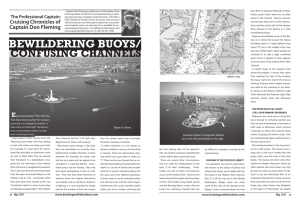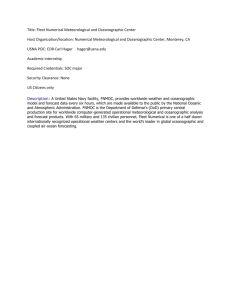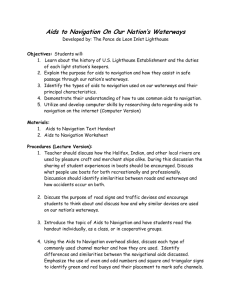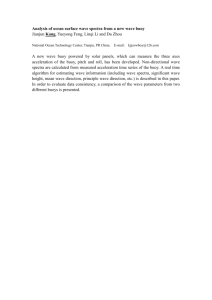vandalism-leaflet
advertisement
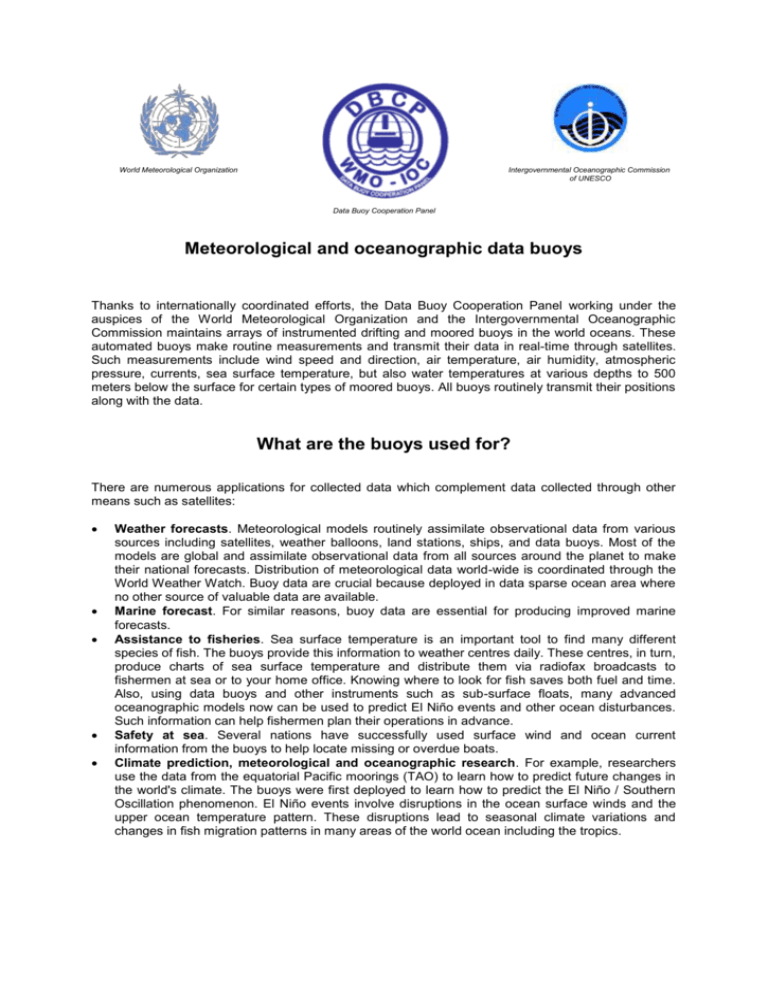
World Meteorological Organization Intergovernmental Oceanographic Commission of UNESCO Data Buoy Cooperation Panel Meteorological and oceanographic data buoys Thanks to internationally coordinated efforts, the Data Buoy Cooperation Panel working under the auspices of the World Meteorological Organization and the Intergovernmental Oceanographic Commission maintains arrays of instrumented drifting and moored buoys in the world oceans. These automated buoys make routine measurements and transmit their data in real-time through satellites. Such measurements include wind speed and direction, air temperature, air humidity, atmospheric pressure, currents, sea surface temperature, but also water temperatures at various depths to 500 meters below the surface for certain types of moored buoys. All buoys routinely transmit their positions along with the data. What are the buoys used for? There are numerous applications for collected data which complement data collected through other means such as satellites: Weather forecasts. Meteorological models routinely assimilate observational data from various sources including satellites, weather balloons, land stations, ships, and data buoys. Most of the models are global and assimilate observational data from all sources around the planet to make their national forecasts. Distribution of meteorological data world-wide is coordinated through the World Weather Watch. Buoy data are crucial because deployed in data sparse ocean area where no other source of valuable data are available. Marine forecast. For similar reasons, buoy data are essential for producing improved marine forecasts. Assistance to fisheries. Sea surface temperature is an important tool to find many different species of fish. The buoys provide this information to weather centres daily. These centres, in turn, produce charts of sea surface temperature and distribute them via radiofax broadcasts to fishermen at sea or to your home office. Knowing where to look for fish saves both fuel and time. Also, using data buoys and other instruments such as sub-surface floats, many advanced oceanographic models now can be used to predict El Niño events and other ocean disturbances. Such information can help fishermen plan their operations in advance. Safety at sea. Several nations have successfully used surface wind and ocean current information from the buoys to help locate missing or overdue boats. Climate prediction, meteorological and oceanographic research. For example, researchers use the data from the equatorial Pacific moorings (TAO) to learn how to predict future changes in the world's climate. The buoys were first deployed to learn how to predict the El Niño / Southern Oscillation phenomenon. El Niño events involve disruptions in the ocean surface winds and the upper ocean temperature pattern. These disruptions lead to seasonal climate variations and changes in fish migration patterns in many areas of the world ocean including the tropics. Advice to fishermen and mariners Do not pick up drifting buoys. Buoy operators do not refurbish the drifting buoys once deployed. They would continue to transmit their position along with erroneous meteorological and oceanographic data from the deck of the ship. DO keep watch for the moored buoys at sea; they should be visible on radar and can be avoided. Always keep off your fishing operations from the buoys in order to avoid entanglement of your net with the buoy. DON'T moor to, damage, or destroy any part of the buoys. Do educate your fellow community about the use of data buoys. The buoys may attract fish: although it may be tempting, DON'T deploy gear around or near to the buoys. If your gear tangles with the buoy, DON'T damage or cut the buoy to retrieve your gear. Both drifting and moored buoys provide valuable information to many communities, including fishermen and mariners. Longline fishing gear entangled in a TAO mooring. Wind measuring meteorological drifting buoy Oceanographic drifter TAO/PIRATA array moored buoy (equatorial Atlantic & Pacific) http://www.pmel.noaa.gov/toga-tao/ http://satelite.cptec.inpe.br/imagens/dadospcd/pirata/ http://www.brest.ird.fr/pirata/piratafr.html TRITON moored buoy (Western equatorial Pacific) http://www.jamstec.go.jp/jamstec/TRITON/ E-SURFMAR moored buoy (North Atlantic) http://esurfmar.meteo.fr For more information: Technical Coordinator of the Data Buoy Cooperation Panel JCOMMOPS (IOC-UNESCO / WMO) IFREMER, Blaise Pascal Hall 1625 Route de Sainte Anne 29280 Plouzane France http://dbcp.jcommops.org
